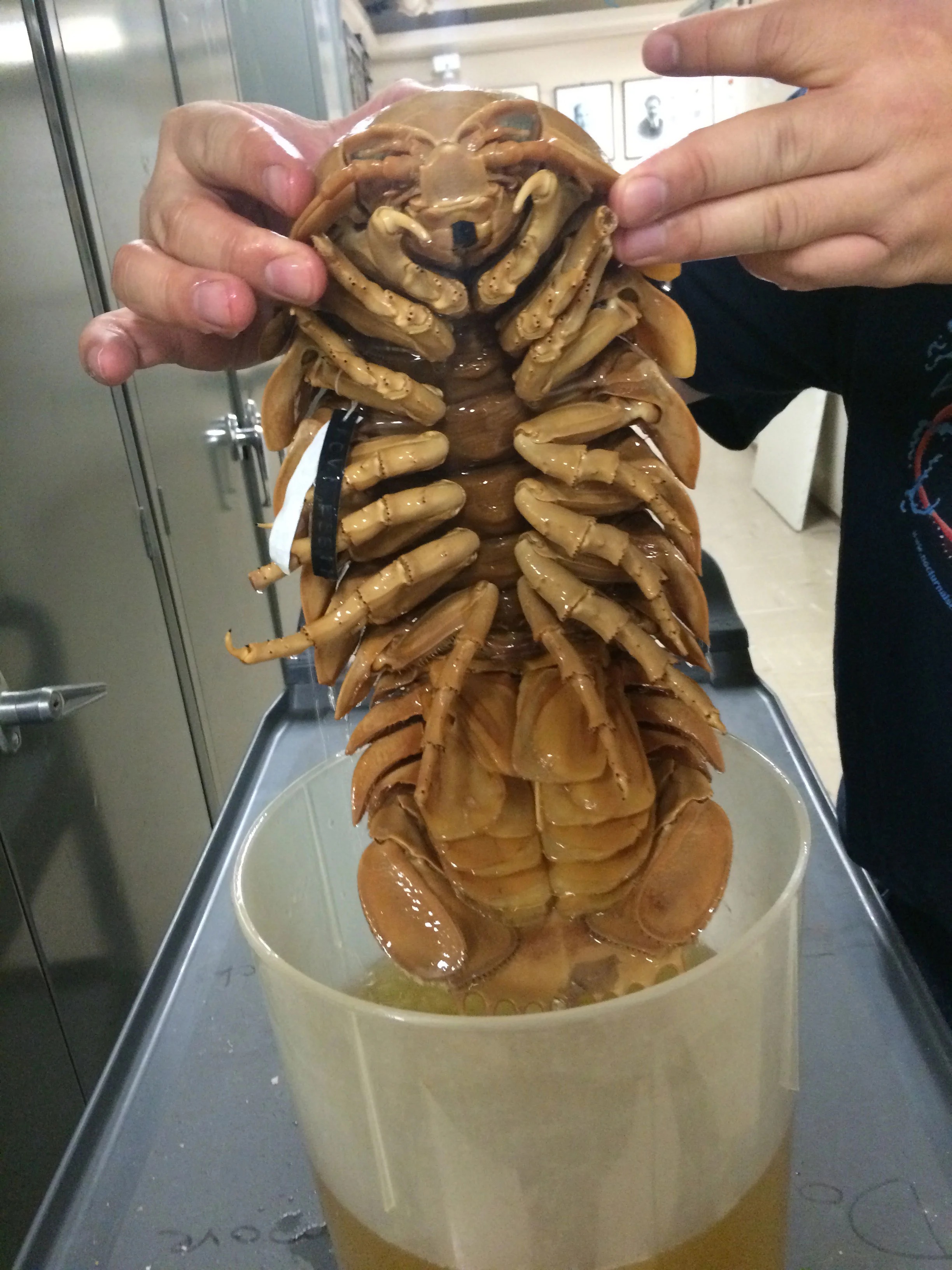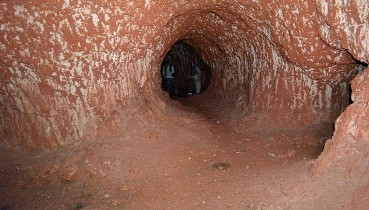
Giant Isopod
12. Giant Isopod
Location: Deep waters of Atlantic, Pacific and Indian Oceans
Giant isopods live between 550 to 7020 feet deep, and prefer a mud or clay floor, which they burrow into for shelter. The most scary feauture about them, apart from their bug like appearance, is that they can get really BIG! Their size ranges between 7.5 and 14.2 inches in length, but they can get much bigger: One specimen pulled up with an ROV in 2010 was 2.5 feet long! They also can survive very long without eating. In fact, one giant isopod in Japan went for five years without eating a single bite before dying earlier this year. They are known to bite! But its a small one, harmless. Believe it or not THERE’S A WHOLE ALBUM DEDICATED TO SONGS ABOUT THEM. It’s called Songs About Giant Isopods, and you can listen to it here.
A giant isopod is any of the almost 20 species of large isopods (crustaceans distantly related to shrimp and crabs, which are decapods) in the genus Bathynomus. They are abundant in the cold, deep waters of the Atlantic, Pacific, and Indian Oceans.[1][2] Bathynomus giganteus, the species upon which the generitype is based, is often considered the largest isopod in the world, though other comparably poorly known species of Bathynomus may reach a similar size (e.g., B. kensleyi).[1] The giant isopods are noted for their resemblance to the much smaller common woodlouse (pill bug), to which they are related.[3]French zoologist Alphonse Milne-Edwards was the first[4] to describe the genus in 1879[5] after his colleague Alexander Agassiz collected a juvenile male B. giganteus from the Gulf of Mexico. This was an exciting discovery for both scientists and the public, as at the time the idea of a lifeless or "azoic" deep ocean had only recently been refuted by the work of Sir Charles Wyville Thomson and others.[citation needed] No females were recovered until 1891.
Giant isopods are of little interest to most commercial fisheries, but are infamous for attacking and destroying fish caught in trawls.[6] Specimens caught in the Americas and Japan are sometimes seen in public aquariums.[3]
Advertisements
28 November 2022
Advertisements



